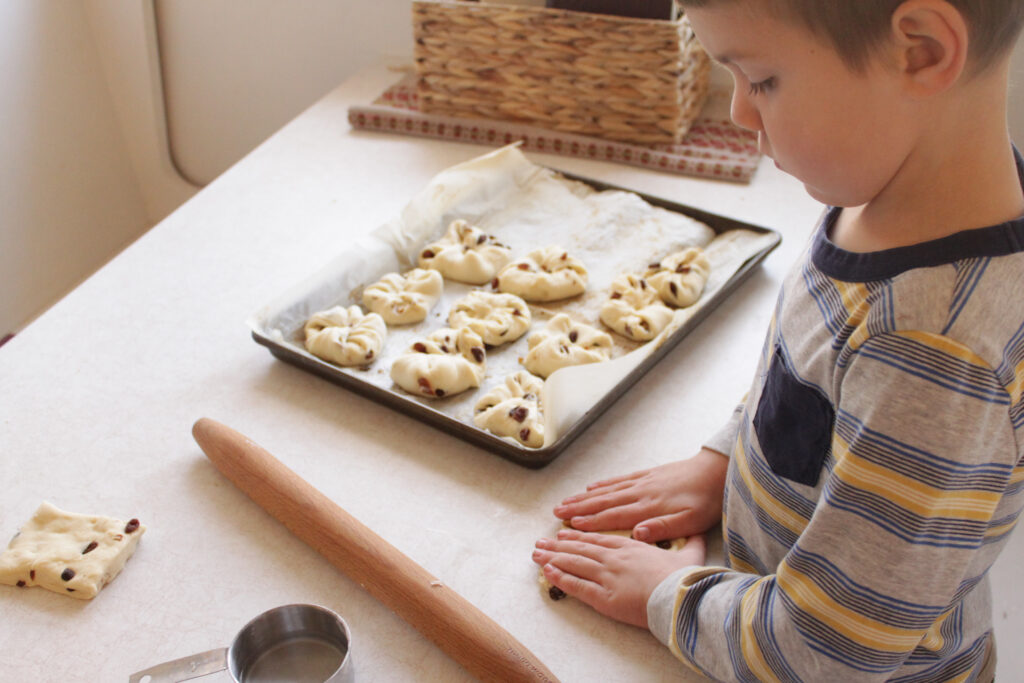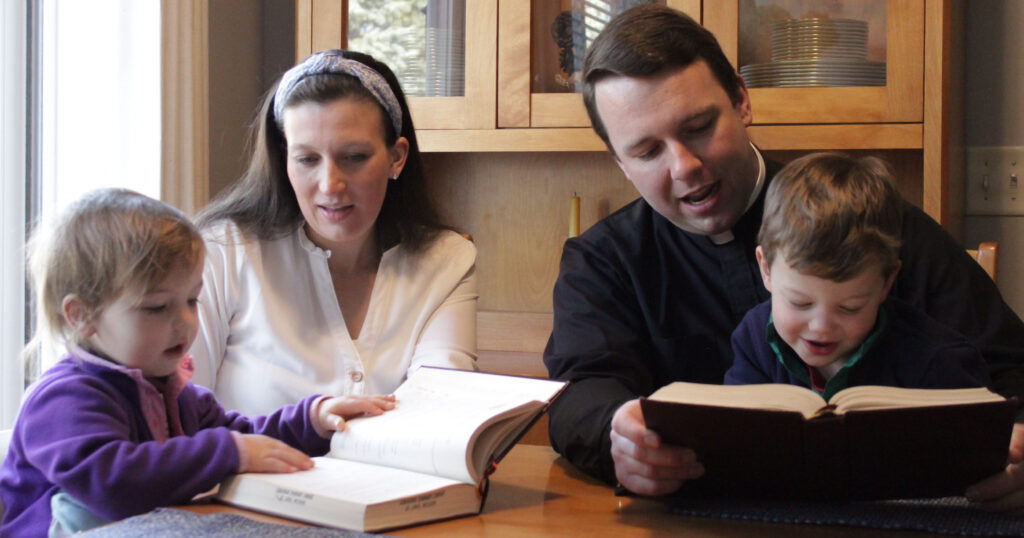This is the latest installment of “Life in the Church Year,” a series by Dr. Kristen Einertson and Tessa Muench of All the Household. This series will provide guidance for living out the seasons of the Church Year at home with your families. Find month-by-month lists of Lutheran feasts, festivals and commemorations here.
Each October, the Church Year gives Lutherans something to look forward to. The Festival of the Reformation is a highlight, both commemorating the day on which Dr. Martin Luther is said to have nailed his 95 Theses to the Castle Church door and reminding us of this blessed era of theological discourse that forever changed the landscape of Western Christianity. As Reformation Day always falls on the last day of the month, Oct. 31, it also serves as a gentle reminder that the church will soon enter the last month of Trinitytide and the final days of the church’s annual cycle. Reformation Day offers multiple opportunities for Lutherans to celebrate. Perhaps your parish incorporates uniquely Lutheran elements into your service — using Luther’s Mass, playing Bach’s music or offering a special Bible study on the Lutheran Confessions.
You can also observe this day at home: Throw a Reformation-themed party, crack open a German beer and belt out “A Mighty Fortress” or “Thy Strong Word” in a hymn singalong. To add an educational element to your celebration and month-long reflection on this era, familiarize yourself with the lives and hymns of the great Lutheran hymnwriters. Philipp Nicolai, Johann Heermann and Paul Gerhardt are great examples of men who proclaimed the Gospel message through music — the LCMS commemorates them all together on Oct. 26. Giving us the “king of chorales” (LSB 516) and “queen of chorales” (LSB 395), along with dozens of other rich hymns, these men left us a treasure trove of Lutheran music that embodies the clear proclamation of the Gospel that was at the heart of the Reformation.

We also encourage you to try out this Reformationbrötchen (Reformation Roll) recipe, a special pastry that incorporates the symbol of Lutheranism: the Luther rose. Also known as Luther Brot, this roll is a well-known, historically appropriate pastry for the day. It is even said to have come from Luther’s own household and to be a treat he himself enjoyed, purportedly invented by his wife.
Consider joining the generations of Lutherans who have enjoyed this treat in honor of the Reformation and worked to faithfully proclaim the Gospel through the ages.
Reformationbrötchen
Ingredients:
1 cup warm milk 1 packet yeast 4 Tbsp. butter ¼ cup sugar 1 egg 3–3 ½ cups flour ½ cup raisins ⅓ cup chopped almonds 12 Tbsp. red jam of choice 1 tsp. lemon or orange zest Powdered sugar for dusting (optional)
Instructions:
- Mix together the yeast and the slightly warmed milk in a small bowl, setting aside for a few minutes.
- Cream the butter and sugar together. Then beat in the egg and add the milk mixture. Gradually mix in the flour until a soft and slightly sticky dough forms. Add the raisins and almonds.
- Knead the dough until smooth, coat with a bit of oil, cover with a towel, and place it in a warm spot to rise for about 1 hour.
- Preheat the oven to 350°F. On a floured surface, roll out the dough into a rectangle and cut into 12 even-sized squares. Roll the individual squares flat again.
- Fold the corners of each square into the center, pressing down gently. Put the squares on lined baking sheets. Put 1 Tbsp. of jam in the center of each roll.
- Bake for about 15 minutes or until golden brown. Let the rolls cool completely before dusting with powdered sugar, if desired, and the lemon or orange zest.
Cover image: Tessa Muench





